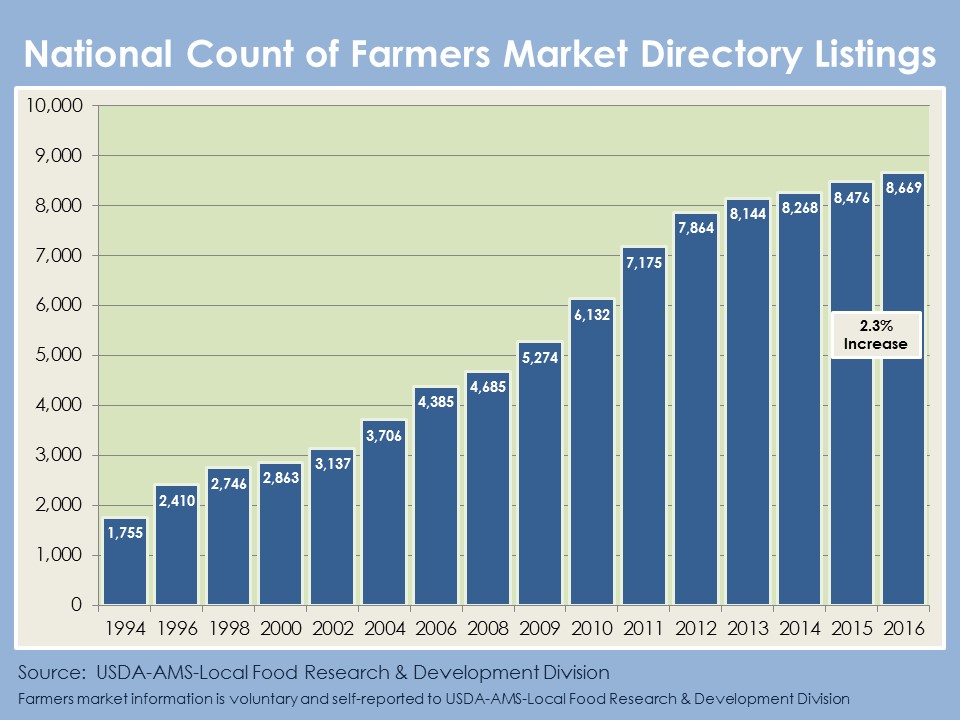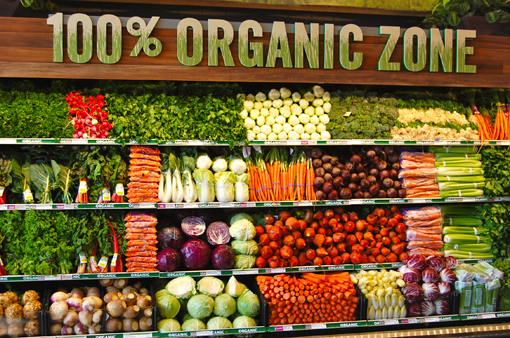Eating Green: Can You Trust the Terms?
Unless you’ve been living under a rock for the past decade, you know that sustainable, organic agriculture and local food are growing trends worldwide. In your local grocery store, there are likely entire sections filled with produce plastered with “local” and “organic” stickers that proclaim their benefits to body, environment, and community. It’s more expensive, but it’s natural to assume that buying from this selection has benefits that outweigh the extra cost.
Today’s consumers love the idea of food that is healthy, fresh, and sold within the local economy. This is a trend that cannot be, and has not been, ignored. According to the Agricultural Marketing Research Center, the number of farmers markets in the United States has more than quadrupled from 1994 to 2013, with a 4 percent increase in the final year of the survey. At the same time, the organic food industry recorded all-time record sales in 2015.
Everyone from town groceries to juggernauts like Walmart are cashing in on green eating, with the iconic chain stating on their website that they would “sell $1 billion of goods sourced from 1 million small and medium-sized farmers in emerging markets by the end of 2015”.

Image source: USDA
Small Towns, Big Business
Walmart’s pledge sounds good on paper. Judging by the images of lush veggies and happy farmers hanging over the grocery sections, they’re doing us all a favor by using their enormous economic weight to give small farms a boost, right? Actually, it may not be so simple.
According to an article in the Huffington Post, if you were to walk into your average Walmart, only about 11 percent of the produce selection would have been grown in the same state.
The term “locally grown” generally refers to food that isn’t moved long distances from farm to consumer. Ideally, this produce is grown in a sustainable manner by small farms and is fresh, delicious, and rich in nutrients. It’s harvested and sold in the immediate area to people that are part of the same economy and community as the farmers.
Unfortunately, many states have no legal definition on what constitutes “local” food. Should it come from within ten miles of the store? A hundred? Within the state? This is in most cases left up to the retailer – something with potential for questionable advertising.

Image source: Whole Foods
One reliable way to ensure that what you’re buying is indeed from a farmer that fits your personal definition of “local” is to do your shopping at a farmers market. This way, you’re making purchases directly from the farmers themselves and don’t have to take a company at their word. Plus, if local agriculture is an issue you care about, it’s nice to talk to the people you’re supporting face-to-face. They’ll often let you sample produce, and the prices are often equal or cheaper than those at a grocery store!
Sticker Shock
What about the other trendy food qualifier – organic? As defined by the USDA, organic farming is a system designed to “integrate cultural, biological, and mechanical practices that foster cycling of resources, promote ecological balance, and conserve biodiversity.” Any farm selling food marked as “organic” must comply with certain criteria or be subject to fines up to $11,000 per violation.
There are actually several different organic labels in use, and each has to meet a different set of criteria. These include “100% Organic”, “USDA Organic”, and “Made With Organic”. Only the first two types may display the USDA official seal, and all must list the ingredients on the packaging.
The question then is how closely regulated are organic farms? As it turns out, they’re checked on fairly regularly. After obtaining their initial USDA Organic certification, each farm must pass an annual inspection to ensure that they are keeping up on the requirements, lest they suffer the fines. If you agree with the criteria these farms are held to, you can generally trust that food bearing the USDA seal is produced as advertised.
The debate remains as to whether eating organic is actually more beneficial to your health than traditional food. Numerous sources have found that both types of produce have comparable levels of nutrients, and may make less of a difference to personal health than many people assume. However, many organic farms also place a greater focus on environmental sustainability, soil conservation, and the like. It’s up to you, the consumer, to decide whether these benefits are worth your extra dollars.
So the question remains: when you do your grocery shopping, what should you be on the lookout for if sustainable eating is your goal? If you’ve been reading our blog, you know we’ve talked about the importance of farm-to-table and the way that is strengthens local communities and the economies within them.
With the ambiguity associated with the term “local”, it’s important to take an active role when finding local produce. Even if you find food made a mile from the store, there’s nothing that says it’s not still made in a huge, unsustainable factory farm spewing pollution to the heavens and pumping toxic pesticides into the water supply. Buying from local farmers directly — or at least asking an employee at your grocery store if they have information on exactly where their stock comes from — can help you ensure that your dollar is having the impact you want it to.
Organic is a little more hands-free; as long as you keep an eye out for USDA certification, you generally know what you’re getting. Granted, different farms go to different lengths once they’ve met the necessary requirements for their certification, and extra research is never amiss when you’re concerned about how your food is grown. If less chemicals and more natural farming methods make you feel better about what you put into your body, going organic is never a bad thing.
Now that we’ve got a sense of the reliability behind modern food production’s two most trendy adjectives, what’s the bottom line?
In all cases, the most important thing as a consumer is to do your homework. The point of local produce is community and the economy near you; organic produce is about making a better, greener, healthier world for everyone. The two often go hand in hand, and it’s key to remember that at it’s essence, these words are just advertising. Lots of companies will do the bare minimum necessary to slap stickers on their food and profit off of a buyer’s good intentions.
If we’re going to create a world of sustainable, healthy food, consumers have to ask questions and find the farms and companies that are genuinely doing their best to provide a service in the spirit of a greener future. If we take an active role and work together on both ends of the food system, we’ll all be better off.

